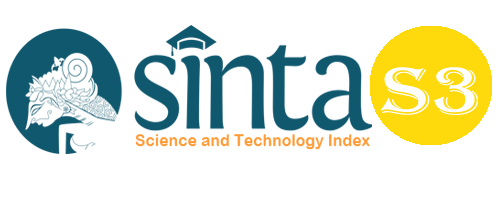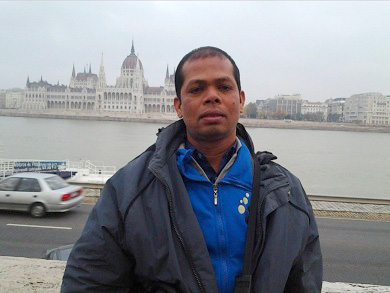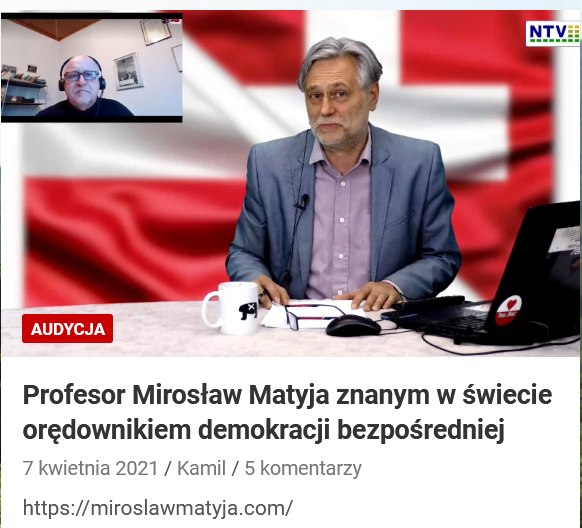Tourism Village Development through Empowerment Approach in Kampung Island Besing, Berau Regency
Abstract
This study aims to examine the ongoing process of community empowerment in the development of a tourist village in Kampung Pulau Besing. This type of research is descriptive with a qualitative approach. This approach is used to describe and analyze community empowerment in the development of Pulau Besing Tourism Village. Data collection techniques through interviews, observation, and documentation. Research informants include the Head of the Village, Head of the Tourism Awareness Group, and one homestay manager. The results of community empowerment through tourism village training in Pulau Besing Village, Berau Regency are 1) Increasing public knowledge about tourism, It is proven by the people of Besing Island who have realized that the tourism potential on Besing Island if managed optimally in mutual cooperation will provide an attraction for tourists to visit and have recreation in this village. So that it can move the village economy, where village income is not only relied on in the fisheries and handicraft sectors. 2) The development of independence and creativity, this is implemented with the community having started branding the Kampung Pulau Besing tourist destination through the Instagram Social Media platform, promotions involving influencers and stakeholders, making posters of attractive tour packages, and often creating published content about tourism activities on Besing Island.
Keywords
Full Text:
PDFReferences
Anwas, Oos M. (2013). Pemberdayaan Masyarakat Di Era Global. Bandung: Alfabeta
Cooper, John Fketcher, David Gilbert and Stephen Wanhill. (1995). Tourism, Principles and Practice. London: Logman
Dewi, M. H. U. (2013). Pengembangan desa wisata berbasis partisipasi masyarakat lokal di Desa Wisata Jatiluwih Tabanan, Bali. Jurnal Kawistara, 3(2).
Dinas Pariwisata DIY. (2014). Kajian Pengembangan Desa Wisata di DIY. Laporan Akhir. DIY: Dinas Pariwisata DIY.
Disparbud.kamparkab.go.id. (2019). Sapta Pesona Pariwisata Indonesia. [Online]. Diakses dari: https://disparbud.kamparkab.go.id/sapta-pesona-pariwisata-indonesia/
Fukuyama, F. (2002). The Great Disruption: Hakikat Manusia dan Rekontruksi Tatanan Sosial. Yogyakarta: Qalam
Gautama, B. P., Yuliawati, A. K., Nurhayati, N. S., Fitriyani, E., & Pratiwi, I. I. (2020). Pengembangan desa wisata melalui pendekatan pemberdayaan masyarakat. BERNAS: Jurnal Pengabdian Kepada Masyarakat, 1(4), 355-369.
Hadiwijoyo SS. (2012). Perencanaan Pariwisata Perdesaan Berbasis Masyarakat (Sebuah Pendekatan Konsep). Yogyakarta: Graha Ilmu.
Hakim, M.A.A., Suryantoro, A., and Rahardjo, M. (2021). Analysis of the Influence of Tourism Growth on Economic Growth and Human Development Index in West Java Province 2012-2018. Budapest International Research and Critics Institute-Journal (BIRCI-Journal) Vol 4 (1): 160-169.
Hausler, N. (2005). Definition of Community Based Tourism. Tourism Forum International at the Reisepavillon.
Hermawan, H. (2016). Dampak pengembangan Desa Wisata Nglanggeran terhadap ekonomi masyarakat lokal. Jurnal Pariwisata, 3(2), 105-117.
Kusniawati, D., Islami, N. P., Setyaningrum, B., & Prasetyawati, E. (2017). Pemberdayaan masyarakat berbasis potensi lokal melalui program desa wisata di Desa Bumiaji. Sosioglobal: Jurnal Pemikiran dan Penelitian Sosiologi, 2(1), 59-72.
Nasution, S., Sinulingga, S., and Sufika, A. (Perception of Country Tourism on Tourism Quality in Lake Toba North Sumatera 2020. Budapest International Research and Critics Institute-Journal (BIRCI-Journal) Vol 4 (1): 180-188.
Natori, Nasahiko (ed). (2001). A Guide Book for Tourism Based Community Development. Publisher APTE.
Pookaiyaudom, Gulapish. (2013). “The Integrated Learning of Community-Based in Thailand.” Procedia-Social and Behavioral Sciences,106 (2013): 2890-2898.
Subagyo, R., & Legowo, M. (2021). Modal Sosial dalam Pemberdayaan Masyarakat di Desa Purwosari Kecamatan Purwosari Kabupaten Bojonegoro. Jurnal Penamas, 181–202. http://blajakarta.kemenag.go.id/journal/index.php/penamas/article/view/518/218
Sulistiyani, T.A., (2004). Kemitraan dan Model-Model Pemberdayaan. Yogyakarta: Gava Media.
Tambunan, A.A., Sibarani, R., and Asmara, S. (The Role of Youth in the Development of Cultural Tourism in Tipang Village, Baktiraja District, Humbang Hasundutan Regency. Budapest International Research and Critics Institute-Journal (BIRCI-Journal) Vol 4 (1): 144-152.
Tukiman, Ertien, A. (2019). Dompyong Kecamatan Bendungan Kabupaten Trenggalek Tukiman Prodi Ilmu Administrasi Negara, Universitas UPN “Veteran” Jawa Timur, Ertien Rining N Prodi Ilmu Administrasi Negara, Universitas UPN “Veteran” Jawa Timur Andre Yusuf Trisna Prodi Teknologi. Journal of Public Sector Innovations, 4(1).
Victoria br. Simanungkalit, dkk. (2017). Buku Panduan Pengembangan Desa Wisata Hijau. Jakarta: Asisten Deputi Urusan Ketenagalistrikan dan Aneka Usaha Kementerian Koperasi dan UKM Republik Indonesia.
Wahyuni, D. (2018). Strategi pemberdayaan masyarakat dalam pengembangan desa wisata Nglanggeran, Kabupaten Gunung Kidul. Jurnal Masalah-Masalah Sosial, 9(1), 83-100.
Wearing, S.L. and Mc Donald. (2002). “The Development of Community Based Tourism: Re-Thinking the Relationship Between Tour Operators and Development Agents as Intermediaries in Rural and Isolated Area Communities.” Journal of Sustainable Tourism, Vol. 10, No. 3, 2002.
Widjaja A. (2003). Kebijakan Pembangunan Daerah dalam Era Otonomi. Jakarta: P2ELIPI.
Winarni, T. (1998). Memahami Pemberdayaan Masyarakat Desa Partisipatif dalam Orientasi Pembangunan Masyarakat Desa Menyongsong Abad 21: Menuju Pemberdayaan Pelayanan Masyarakat. Yogyakarta: Adita Media.
Wrihatnolo, Randy R. dan Riant Nugroho Dwidjowijoto. (2007). Manajemen Pemberdayaan: Sebuah Pengantar dan Panduan untuk Pemberdayaan Masyarakat. Jakarta: Elex Media Komputindo.
DOI: https://doi.org/10.33258/birci.v5i3.6749
Article Metrics
Abstract view : 82 timesPDF - 19 times
Refbacks
- There are currently no refbacks.

This work is licensed under a Creative Commons Attribution-ShareAlike 4.0 International License.

This work is licensed under a Creative Commons Attribution-ShareAlike 4.0 International License.

_.gif)

















_.gif)



